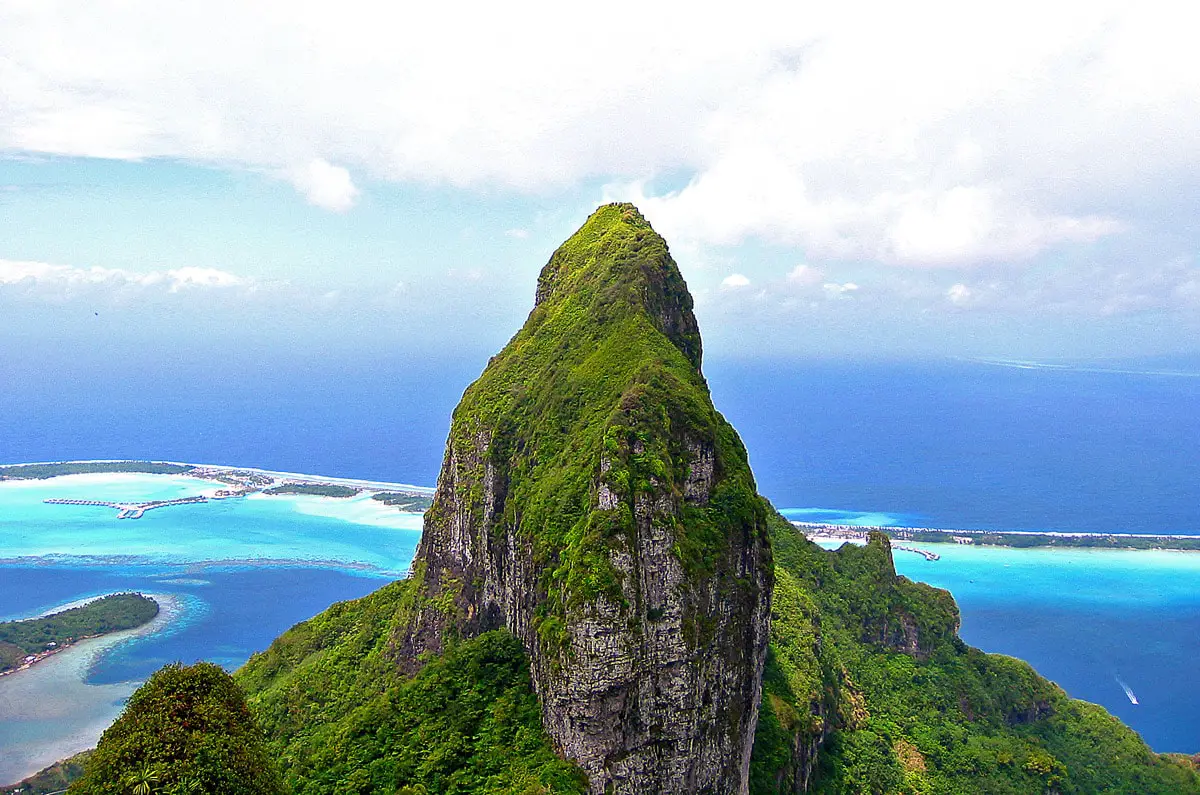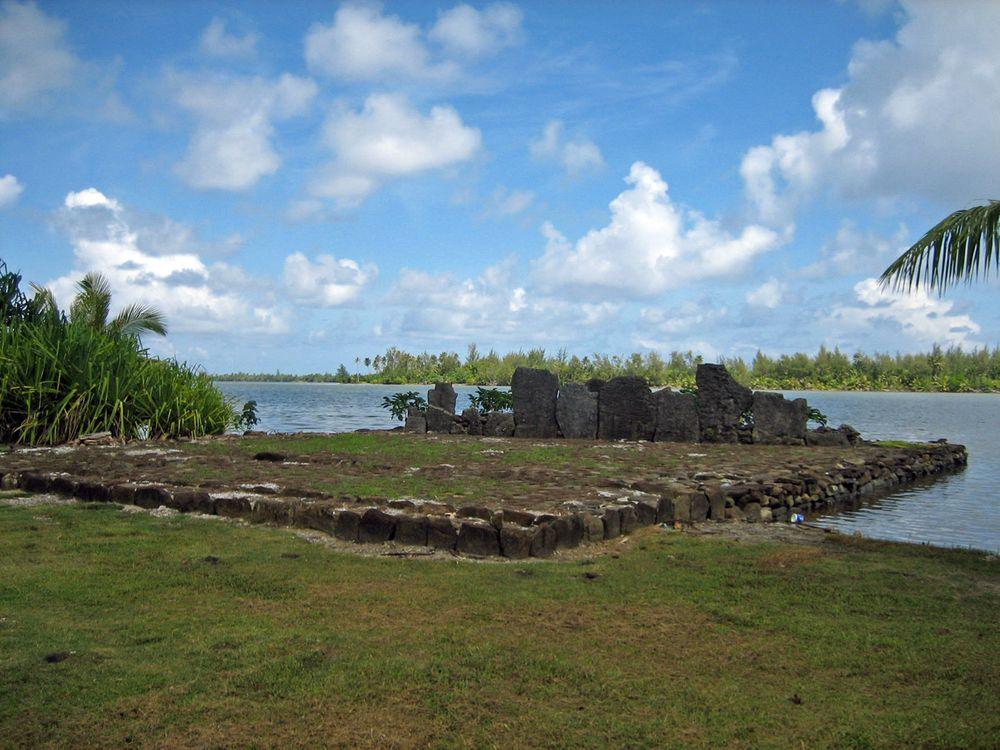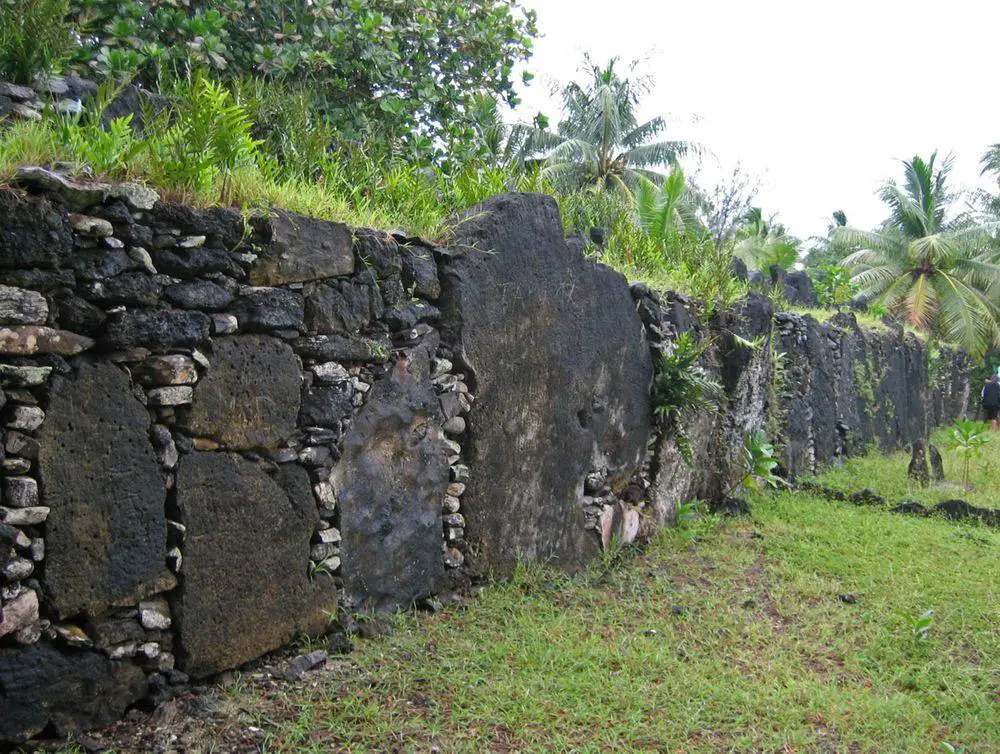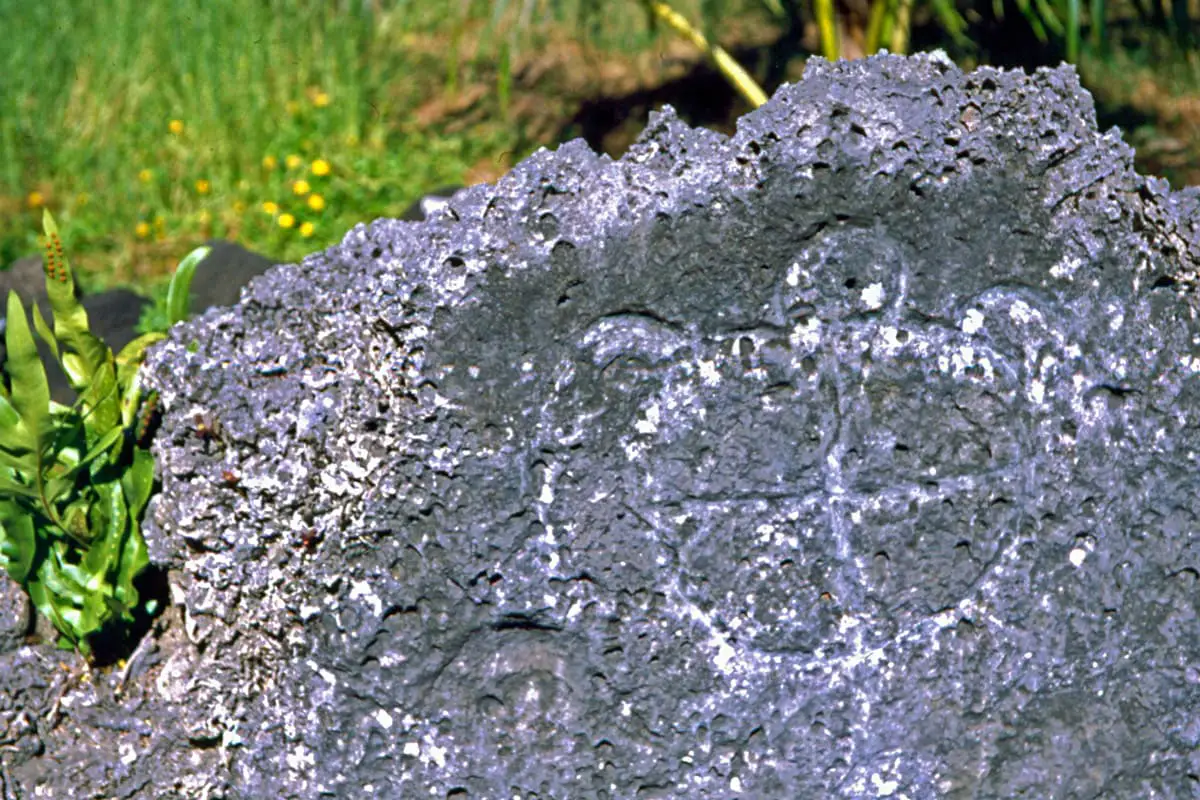Wondermondo 🢖 World 🢖 Wonders of Australia and Oceania 🢖 Wonders of Polynesia 🢖 Wonders of French Polynesia 🢖 Wonders of the Leeward Islands
Territory
Wonders of the Leeward Islands

 Highlights
Highlights
This group of islands is a part of French Polynesia. Islands are very rich with cultural heritage – archaeological monuments and living culture. Here are located some very impressive structures, such as the massive marae Taputapuatea and the abandoned royal town Maeva.
The islands are very picturesque, with mountains, lush tropical vegetation, and incredibly rich marine life – it is no wonder that Leeward islands are beloved by tourists seeking idyllic retreat before the return to their daily lives.
Map with the described wonders
If you see this after your page is loaded completely, leafletJS files are missing.
 Top 19 wonders of the Leeward Islands
Top 19 wonders of the Leeward Islands
Geological wonders
Octopus Grotto
A grotto under the sea level, 120 m long. Located in 30 – 50 m depth. The ceiling is adorned with stalactites that formed when the grotto was above sea level. Numerous fishes live in the cave.
Biological wonders
Temehani Ute Ute Plateau
A small plateau with 26 species of plants that grow only here. One of these plants is the famous Tiare Apetahi (Apetahia raiateensis) with beautiful, large flowers.
Huahine Eels, Faie
In a creek is living a group of tame, sacred eels, 0.9 – 2 m long, fed by locals and eating from hand.
Banyan in Hatiheu
An enormous banyan tree (Ficus prolixa).
Archaeological wonders
Marae Taputapuatea
A unique complex of marae, one of the important sacred complexes of Polynesians. Established around 1000 AD and expanded significantly since then, used as a learning center for priests and navigators. Includes multiple stone structures and sculptures. This unique archaeological monument is partly restored.
Maeva
This abandoned royal settlement contains the largest concentration of megalithic structures in Polynesia except for Easter Island. In total there are known some 200 stone structures – marae, dwellings, agricultural structures, stone fish traps, and fortification walls. Includes Marae Oavaura, Marae Vaiotaha, and other structures.

Mata’ire’a Rahi
The most important marae in Huahine: it was used for royal ceremonies. Located on the summit of a hill. Constructed sometime around 1450 – 1500.
Fare Potee
A thorough reconstruction of a gathering place of Polynesian community, built over a marae.
Marae Manunu
Large, impressive, and once important shrine with enormous stone structures made of giant stones. The rear wall is located at the sea. Restored in 1967. The most important temple on the island after Mata’ire’a Rahi lost its importance.

Marae Fare Rua
The largest marae in Bora Bora. Altar is some 50 m long and has up to 3 m tall standing stones.
Marae Rauhuru
Large, interesting marae. Some stones here contain petroglyphs, depicting turtles, canoes, and circles.
Marae Anini (Huahine Iti)
Seaside marae, contains very impressive settings of giant upright stones. Constructed in the 19th century for the worship of deities Oro and Hiro.
Fa’ahia
Interesting, well-preserved remnants of early Polynesian settlement. Inhabited sometimes around 700 – 1200 AD. The site is inundated and thus the artifacts, including wooden tools, have been well preserved. The site contains numerous bones of birds that are now extinct here. Seven species of birds are extinct globally.
Maupiti turtle petroglyphs
A group of petroglyphs in stones near the beach, depicting turtles.
Ofai Honu (‘Ofa’i-Honu)
A large stone, covered with engravings of turtles. It symbolizes the birth of the founder of Bora Bora – Firiâmata-ô-Vavau.
Marae Fare Opu
Large royal marae, unfortunately, half buried under a road. Some stones contain petroglyphs – depictions of turtles. Made in the 15th – 16th century. Ahu is 25 m long.

Marae Tainu’u
An impressive marae with up to 4 m high standing stones. Stones contain petroglyphs (Tevaitoa petroglyphs) – engravings of turtles. In front of the marae has been built Tevaitoa church.
Petroglyphs of Haapapara Valley
One of the richest finds of petroglyphs in French Polynesia. Contains depictions of humans, turtles, and geometric symbols.
Architecture wonders
Saint André Church in ‘Uturoa
An unusual church building. Adorned with stone lace: it creates an interesting play of lights inside.
 Recommended books
Recommended books
Lonely Planet Tahiti & French Polynesia
Lonely Planet Tahiti & French Polynesia is your passport to the most relevant, up-to-date advice on what to see and skip, and what hidden discoveries await you. Swim in the sparklingly clear waters, hike to waterfalls, dive into coral wonderlands, then sips cocktail by the beach; all with your trusted travel companion. Get to the heart of Tahiti & French Polynesia and begin your journey now!
Archaeological Investigations of Marae Structures in Huahine, Society Islands, French Polynesia
This publication is based on new fieldwork carried out on the island of Huahine, French Polynesia, in the years 2001-
2004. The aim of the project was to establish a chronological framework of the marae structures mainly on the island of Huahine in the Leeward Society Islands. However, dates were also conducted on earlier collected charcoal from excavated marae structures on the Windward Islands to control the wider context of our local results. Other questions of interest to this study were how the marae structures were located on the landscape, as well as, aspects of their extended uses and modern changes.


